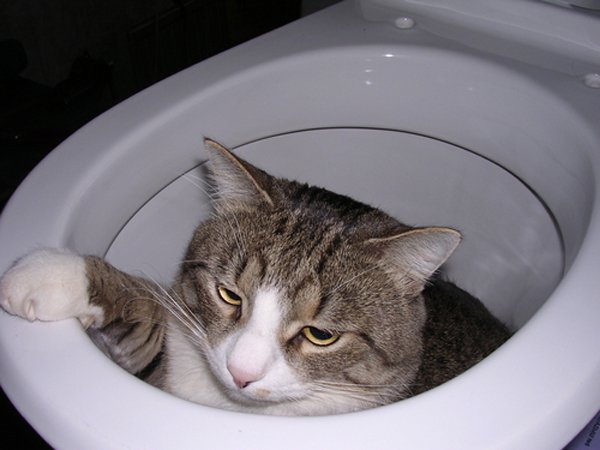Every person is bound to have his or her own perception involving Don’t flush cat feces down the toilet.

Introduction
As pet cat proprietors, it's necessary to be mindful of just how we throw away our feline pals' waste. While it may appear hassle-free to flush pet cat poop down the bathroom, this practice can have destructive repercussions for both the setting and human health and wellness.
Alternatives to Flushing
Fortunately, there are more secure and much more liable ways to take care of feline poop. Take into consideration the complying with alternatives:
1. Scoop and Dispose in Trash
One of the most common technique of dealing with pet cat poop is to scoop it into an eco-friendly bag and throw it in the trash. Make certain to use a specialized litter scoop and dispose of the waste quickly.
2. Usage Biodegradable Litter
Choose eco-friendly cat trash made from products such as corn or wheat. These litters are environmentally friendly and can be securely dealt with in the garbage.
3. Hide in the Yard
If you have a yard, think about hiding cat waste in an assigned location away from vegetable gardens and water resources. Make certain to dig deep enough to avoid contamination of groundwater.
4. Mount a Pet Waste Disposal System
Buy an animal waste disposal system especially designed for cat waste. These systems utilize enzymes to break down the waste, minimizing smell and ecological impact.
Health and wellness Risks
Along with ecological problems, flushing cat waste can likewise present wellness threats to humans. Pet cat feces may include Toxoplasma gondii, a parasite that can trigger toxoplasmosis-- a possibly extreme ailment, specifically for pregnant women and individuals with weakened immune systems.
Environmental Impact
Flushing feline poop introduces dangerous virus and bloodsuckers right into the water system, posturing a substantial threat to marine ecological communities. These impurities can adversely influence aquatic life and concession water high quality.
Final thought
Accountable animal ownership extends beyond giving food and sanctuary-- it additionally includes correct waste monitoring. By avoiding flushing pet cat poop down the toilet and opting for alternative disposal approaches, we can reduce our environmental footprint and protect human health.
Why Can’t I Flush Cat Poop?
It Spreads a Parasite
Cats are frequently infected with a parasite called toxoplasma gondii. The parasite causes an infection called toxoplasmosis. It is usually harmless to cats. The parasite only uses cat poop as a host for its eggs. Otherwise, the cat’s immune system usually keeps the infection at low enough levels to maintain its own health. But it does not stop the develop of eggs. These eggs are tiny and surprisingly tough. They may survive for a year before they begin to grow. But that’s the problem.
Our wastewater system is not designed to deal with toxoplasmosis eggs. Instead, most eggs will flush from your toilet into sewers and wastewater management plants. After the sewage is treated for many other harmful things in it, it is typically released into local rivers, lakes, or oceans. Here, the toxoplasmosis eggs can find new hosts, including starfish, crabs, otters, and many other wildlife. For many, this is a significant risk to their health. Toxoplasmosis can also end up infecting water sources that are important for agriculture, which means our deer, pigs, and sheep can get infected too.
Is There Risk to Humans?
There can be a risk to human life from flushing cat poop down the toilet. If you do so, the parasites from your cat’s poop can end up in shellfish, game animals, or livestock. If this meat is then served raw or undercooked, the people who eat it can get sick.
In fact, according to the CDC, 40 million people in the United States are infected with toxoplasma gondii. They get it from exposure to infected seafood, or from some kind of cat poop contamination, like drinking from a stream that is contaminated or touching anything that has come into contact with cat poop. That includes just cleaning a cat litter box.
Most people who get infected with these parasites will not develop any symptoms. However, for pregnant women or for those with compromised immune systems, the parasite can cause severe health problems.
How to Handle Cat Poop
The best way to handle cat poop is actually to clean the box more often. The eggs that the parasite sheds will not become active until one to five days after the cat poops. That means that if you clean daily, you’re much less likely to come into direct contact with infectious eggs.
That said, always dispose of cat poop in the garbage and not down the toilet. Wash your hands before and after you clean the litter box, and bring the bag of poop right outside to your garbage bins.
https://trenchlesssolutionsusa.com/why-cant-i-flush-cat-poop/

We had been introduced to that editorial about How to Dispose of Cat Poop and Litter Without Plastic Bags from a good friend on our other web blog. Do you know another individual who is excited by Can You Flush Cat Poop Down The Toilet?? Do not hesitate to promote it. Thanks a lot for going through it.
Book An Estimate Now